[Match preview] Australia vs Vietnam - 2022 Asian Qualifiers
Facing off in Melbourne and under the support of home fans, Australia will give it all to secure three points against a Vietnam side who are eager to gain a point. So, how will the match play out?
Back in September of 2021 and under a hot and humid condition in Hanoi, Australia faced Vietnam for the first time in the history. Even though both nations have played each other numerous times at various youth tournaments, the main national teams have never faced the other at any international tournaments, mainly because Vietnam have never made this far into the Asian World Cup Qualifiers or have ever crossed Australia’s path at the Asian Cup. That record stood correct until the third round of the Asian Qualifiers for the 2022 World Cup, where both nations were drawn in the same group, leading to the match in September of 2021 and the upcoming match in January of 2022.
The match at My Dinh Stadium was not a spectacle with Vietnam opted for a defensive mentality against a strong Australia side with the hope of gaining at least a point at home. But a goal from Sydney FC’s Rhyan Grant secured all three points for the visitors at an empty stadium due to the ongoing pandemic in Vietnam at that time. Upon returning to Australia, however, situations have changed.
Australia have played their first home match in more than a year, at the Western Sydney Stadium, as they played out a 0-0 draw against Saudi Arabia with more than 23,000 fans cheered on. This time, they will be playing at Melbourne, and they will once again have the backing of their home fans at the Melbourne Rectangular Stadium. It will be a massive boost to the confidence of not only the Socceroos, but also the Vietnamese side given that there will be a decent number of Australian-based Vietnamese fans turning out at the match. So, what can we expect from the second leg of this matchup?
The first leg
To speculate what will happen in Melbourne on the 27th of January, we must look back at the events that happened in Hanoi back in September.
With 75% of ball possession, Australia easily dominated the first half and the visitors used the advantage to push Vietnam back into their own half. But against a Vietnam side who were very well-disciplined in defence, Australia could not create too many chances towards Dang Van Lam goal. Most of the time, the Australian players could only move the ball in between themselves and, on several occasions, attempted to find even a small gap in Vietnam’s 5-4-1 low block to get the ball into the final third.
For Vietnam, defending in a 5-4-1 formation allowed the home side to overload the wide space easily by creating a 2v2 situation whenever Australia tried to pass the ball wide. From there, the wide players would attempt to pressure the likes of Rhyan Grant, Brad Smith or Awer Mabil and forced them to pass the ball back to the centre-backs. If Australia tried to attack down the central area, they would face the pressure from two central midfielders and, occasionally, a centre-back who would step out of his position to press Adam Taggart or Tom Rogić.
The visitors did try to have more players in between the lines to create more passing lanes down the central area and, at times, their formation even looked like a 4-2-4 rather than a 4-2-3-1 with Taggart sometimes dropping down to the attacking midfield trio behind him. But it did not work out for Australia as both Jackson Irvine and Ajdin Hrustić were not able to pass the ball to the front four very often and still had to pass the ball wide to both full backs.
But the key difference that Australia had not only in the first half, but also in this match, was Ajdin Hrustić. The Eintracht Frankfurt midfielder was the main ball progressor for the side as he usually looked to find teammates up front through his passes while also aiming to progress the team’s attack. Besides from his tendency to drop in between Australia’s centre-backs when either Harry Souttar or Trent Sainsbury moved into the half spaces, Hrustić also liked to move towards the left side of the pitch to receive and pass the ball from such area.
It is worth noticing that his assist for Grant to score the only goal of the match was not the only time that he made an early cross or a lofted pass from the left-hand side. There were at least three occasions where he attempted to send the ball from the left into Vietnam’s 16-yard box, with the previous two attempts were successful. The assist was just the deadliest bullet of the bunch, the others were warning shots.
As mentioned, with Hrustić sometimes moved in between the centre-backs, Australia were able to build up with a temporary back three against Vietnam’s front three. The intention was to pin down Vietnam’s attacking midfielders, Nguyen Quang Hai and Phan Van Duc, and prevent them from moving wide when the ball was passed to either of Australia’s full-backs.
Noticeably, from his central midfielder position, Jackson Irvine also occasionally moved wide into Rhyan Grant’s position, allowing for the Sydney full-back to roam forward. Rather than choosing to have both central midfielders pinning down Vietnam’s central midfielders and creating passing lanes for Souttar and Sainsbury (similar to what Thailand did in the first leg of the AFF Cup semi-final against Vietnam), both Irvine and Hrustić were sometimes seen roaming from their respective positions. However, given Australia’s preferrence to attack down both flanks, having Irvine and Hrustić out wide gave the visitors numerical advantage to attack down the wings with either the full-back or the winger being unmarked when moving the ball down such flank.
Even though Australia dominated ball possession inside the first half, Vietnam still managed to create several chances towards Mat Ryan’s goal, specifically six shots. But the eagerness to score at home and the lack of efficiency in converting their chances mean that the home side could not convert the few counter-attacking opportunities that they had into goals. And that story remained the same for the second half.
As Vietnam ramped up their attacking mentality, Australia continued to retain possession well, dominate ball possession, and regain possession well by pressing Vietnam inside their own half and inside the middle third. It is also one of the reasons that Vietnam were unable to capitalise on most of their counter-attacking chances that they had. Australia were either too quick to get more players behind the ball to defend, or they pressed very high up the pitch and prevented Vietnam from attack at all.
Another reason was because Vietnam could not find the final pass at the end of their attacking moves. The lack of players to match up with Australia’s players is one thing, but Vietnam relied very heavily on individual skills to get the ball into the box or even create goal-scoring chances. There is no doubt that the likes of Quang Hai or Hoang Duc are good with the ball, but the lack of runs into positions from their teammates for both players to send them through into the box was frustrating to watch. It also forced both players to rely on their individual ability to find chances to score a goal for Vietnam, which explains why most of Vietnam’s shots were taken outside of the box, because Quang Hai and co. were not able to get the ball into the box very often.
It also led to them losing the ball inside the final third on several occasions, specifically twelve times. Since Australia were able to regroup quickly after losing the ball, Vietnam’s attacking players also quickly found themselves being surrounded by a decent number of yellow shirts. Without a clear intention of what to do or without the individual skills that Quang Hai has, other Vietnam players opted to make a risky pass that would end up being intercepted or take on the Australian players themselves, which ended up with them being dispossessed.
Looking only at the score line of the first encounter between both teams, many will think Vietnam had put up a fight to deny Australia from winning with a larger margin than just one goal. Defensively, it is true. On most occasions, Vietnam’s tactical discipline helped them defended well against the attacking pressure that Australia created. In fact, they were unlucky to concede as Hrustić’s assist caught Vietnam’s last defensive line off guard when they tried to regroup, leaving Grant with a free header at the back post.
But on the attacking side, it was a frustrating sight to see the Vietnamese players not knowing what to do with the ball whenever they had a counter-attacking chance. Even though Vietnam were always the underdog in the match and had to withstand heavy pressure from Australia, if the players had better connections with each other (even though they spent five months training with each other, due to the domestic league being suspended, which is a problem for another day!) and knew how to support each other when one player had the ball, the match could have ended up differently. It is a problem that not only spread throughout the third round of the Asian Qualifiers campaign, but also the AFF Championship that took place in between the first leg and the second leg of the Qualifiers.
Vietnam’s performance at the AFF Championship
The AFF Cup came at the perfect time when the confidence of the Vietnamese players was dropping from match to match as they could not even scored a goal since their 3-1 loss to Oman. As the defending champion of the tournament, it was clear that they were the favourites to defend the title again, and also using the competition as a platform to regain the confidence that they once had before the third round of the Asian Qualifiers started. The fact that they were also drawn into a relatively easy group should also helped the team in that regards.
Vietnam finished the first two matches with two relatively easy victories against Laos and Malaysia. But, amid those victories, the problems that were mentioned above were shown again even when Vietnam were now the dominating side of both matches. This great video analysis, from @QuanTue, highlighted the exact problem that Vietnam had against Laos and Malaysia. (I will also be using Quan’s video throughout this segment since he had done a great job analysing every Vietnam’s match throughout the AFF Championship campaign.) [Caption for the video is below the tweet]
(As Laos often set up a low block with 9 players, no surprise Vietnam is the side with the ball most of the time. But that come with a problem. Vietnam had many players behind ball, but lack of runners. Even if they do, mostly they ended up too fast or slow.) - @QuanTue
(Stuck at getting close to the goal, at times Vietnam often tried their luck with long shots, either because they lacked passing options or no gaps to shoot were visible) - @QuanTue
(Still, both goals from Vietnam came from exactly that, they managed to have an "extra" step, got a quick progression & draw Laos to one place, finish in an another.) - @QuanTue
(As Malaysia did not push very high, Vietnam could afford to have either Ngoc Hai or Hoang Duc to pull back & pass. They could either send the ball to the right/long pass behind defence. After few long ball behind, VN decide to hit through flanks or centre.) - @QuanTue
(As Malaysia had to push their team up to find goals, Vietnam were able to take advantage, slow down & actually bypass Malaysia pressure at times. Notably they got off from Malaysia press using the right flanks to either get behind or hit back the centre.) - @QuanTue
Against opponents with similar strength, such as Indonesia and Thailand, Vietnam’s weakness started to be exposed once more. In a match that they were expected to win, they failed to break down Indonesia’s low block that set up in a similar formation as Vietnam’s. Once again, the inability to make the final pass and the eagerness to score prevented them from creating dangerous chances towards Indonesia’s goal. As such, Vietnam finished the match with 21 attempted shots, but only one was on target.
(Vietnam might get past first one or two lines, but at the final phase, either mismatches in movement or decision making prevent them from creating real danger towards Indonesia.) - @QuanTue
(The changes hardly make difference as same problem for Vietnam in 2nd half persisted, they could not dismantled Indonesia defence at all.) - @QuanTue
A draw against Indonesia was not enough to send them top of the table as their 4-0 win against Cambodia during the last matchday of the tournament was overshadowed by a 4-1 win by Indonesia over Malaysia, leaving the defending champion in second place. This set up a clash with Thailand who, under the new management of Alexander ‘Mano’ Pölking, went unbeaten in group A to finish at the top of the table.
There was already a scent of a tough match for Vietnam given how well Thailand played in the group stage. And indeed, in the first leg, Thailand gave the defending champion a tough battle. Two early goals, including one goal conceded from a missed interception from one of Vietnam players, helped Thailand won the battle and moved on to win the trophy as they beaten Indonesia in the final.
It is worth noticing that Thailand put Vietnam on the back foot during the early minutes of the first leg. Similar to how Australia played against Vietnam, Thailand also controlled more of ball possession, and they attempted to push Vietnam back into their own half. The decision to use a 4-diamond-2 from Mano Pölking allowed Thailand to break through Vietnam’s pressing block by having two central midfielders marking Vietnam’s central midfielders of Nguyen Tuan Anh and Nguyen Hoang Duc. This allowed Chanathip Songkrasin to roam in behind Vietnam’s central midfielders and it was also the strategy that Thailand used to score the second goal.

Another aspect that Thailand outperformed Vietnam in was they knew where they wanted to pass the ball to inside of the opposition’s half. Whenever a Thai player had the ball, at least one of his teammates would try to find space to move into and attempt to receive the ball from the ball carrier. The constant movement and rotation from Thai players disrupted Vietnam’s defensive block and, on several occasions, created space for Pölking’s side to move the ball into the final third.
Inside the first leg’s second half and throughout the second leg, Thailand defended their lead through tactical fouls to disrupt Vietnam’s attack. In the second leg, they also set up in a low block and were willing to allow Vietnam to control the match since Pölking was confident in how his players defended. That confidence paid off as Thai centre-backs Manuel Bihr and Elias Dolah had a good match and they managed to intercept crosses or dispossess Vietnam’s attack on multiple occasions.
Accompanying with the previous problems that were mentioned, it wrapped up Vietnam’s disappointing semi-final clash with Thailand and them also losing the title into the hands of their fierce rival. Still, there were lessons to be learned from this tournament, with the hope that they will be applied to the remaining matches of the Asian Qualifiers in order to finish a historic campaign to gain at least one point against better oppositions.
What can we expect from both teams?
Australia
With the Socceroos’ recent call-up, there will be changes to the line-up that last faced Vietnam in Hanoi. Two of the most noticeable absentees from the squad to face Vietnam this time are Harry Souttar and Ajdin Hrustić. The Stoke City centre-back is still recovering from his ACL injury and the Frankfurt midfielder will be suspended for the upcoming match.
The obvious replacement for Souttar will be Miloš Degenek, who is rumoured to sign with MLS side Columbus Crew after this international window. Four centre-backs are called up to the newly-announced Socceroos squad, with Ryan McGowan, Trent Sainsbury and Degenek being the experienced players. The other centre-back in the squad is Central Coast Mariners’ Kye Rowles, who has been a key player in Nick Montgomery’s squad this season and took part in the Olyroos side that played in Japan last year. There is a possibility that Rowles will make his debut for the Socceroos either against Vietnam or Oman given his impressive form for the Mariners this season, and his drastic development since the last A-League season will give Graham Arnold another reason to give him his debut.
For Hrustić, two replacements that stand out in the current Socceroos squad are Aaron Mooy and James Jeggo. Jeggo, who is currently playing for Greece-based club Aris Thessaloniki, started both of Socceroos’ recent matches against Saudi Arabia and China, which put him in the contention to be the replacement Hrustić. But given how well the Frankfurt midfielder played the last time around in the playmaker role alongside Jackson Irvine, having another playmaker to replace Hrustić might be the option that Arnold will choose. In that case, Mooy seems to fit what Arnold is looking for. The former Huddersfield Town and Brighton & Hove Albion midfielder also came on to fill in Hrustić’s role during the last 34 minutes of the previous encounter against Vietnam, which will make him the perfect replacement for Hrustić for this match.
Another absentee from the current squad is left-back Brad Smith. However, there are currently three players who can play in the left-back position of Arnold’s back four. Aziz Behich, who is currently playing for Turkey’s Giresunspor, was the player who went on to replace Brad Smith during the last match, which might make him the strongest contender for the left-back position. Fran Karačić should not be ruled out either. Since making his debut against Kuwait in June 2021, he went on to make a further four caps for the Socceroos and the Brescia full-back can also be chosen to start against Vietnam. The last player is Sydney FC’s Joel King, who played well during the Olympics for the Olyroos team (at least in my opinion), and had been playing frequently for Sydney during the last two A-League seasons. Like Rowles, he is in contention to make his debut for the Socceroos, but it seems unlikely that he will start against Vietnam, but rather coming off the bench for either Behich or Karačić.
Both winger positions can also see changes as Awer Mabil is absent from this call-up. Instead, Matthew Leckie and Martin Boyle might be the players that Arnold will choose to play against Vietnam. In the first match, Mabil’s pace down the left helped the team to attack Vietnam’s right-hand side on several occasions, allowing for Brad Smith to both overlap and underlap to deliver crosses towards Adam Taggart. Leckie will provide something similar as he is also quick on the ball and has good technical ability to bypass the Vietnamese defender. On the right-hand side, Martin Boyle seems like the best option to start against Vietnam, even though Riley McGree is also available for this match. Boyle is also a technical player and good at dribbling at pace, which will give Vietnam’s wide players a tough time.
Up front, Dang Van Lam’s teammate at Cerezo Osaka Adam Taggart is absent from the current squad. But both players that will be replacing Taggart are players that Vietnamese players should be wary of. Melbourne City’s Jamie Maclaren are quick both on and off the ball and he is a player who can sit on the shoulder of defenders and makes runs into the space behind the last defensive line. Should Arnold opt to play long passes into the space behind the Vietnamese centre-backs, Maclaren will be the best choice. But should Arnold look to play a possession game like the first match, Mitch Duke is a player to choose. Duke can fill in the role of either a target man or a deep-lying forward who can hold off the pressure of Vietnamese defenders and lay off passes to quicker wingers out wide. He is also tall, which can also be a threat in the air should crosses be delivered towards him.
Arnold has the preference of changing his tactics based on how the opposition play, with him using a 4-3-3 against China, a 4-4-2 against Saudi Arabia and a 4-3-1-2 against Japan. It will be hard to predict how Australia will play against Vietnam this time, but if Arnold’s staff have done their homework on Vietnam’s AFF Championship campaign, they will know that one of the ways to break Vietnam’s defensive block down, it is through the central area. Furthermore, having two wingers out wide will stretch the play and allow Australia to disrupt Vietnam’s defensive block in a similar way that Thailand did. As such, continuing with the 4-2-3-1 formation looks to be the best strategy. But while they have shown their intention to have players in between Vietnam’s defensive lines during the last match, this match will be the chance to slightly alter the strategy and use the central area as one of the possible attacking lanes.
Vietnam
After a disappointing AFF Championship campaign, manager Park Hang-seo has opted to shake up his squad for both matches against Australia and China. A significant change to the strategy that the team play is not something that Park would look to do, given that he and the team have spent a long period familiarising and playing with such system. As such, we can expect Vietnam to continue to sit deep against Australia and immediately counter-attack when they have the ball.
The questions here, however, are can and will Vietnam capitalise their counter-attacking opportunities well enough to score at least a goal in Melbourne? Will there be any new tactic to help the Vietnamese players to make the most out of the opportunities that they will have? Will Park be encouraging his players to continue to take long shots, or be patient with the chances that they have to create better goal-scoring opportunities? That seems to be the biggest problems that Vietnam are facing, and they need to find a solution to those questions if they want to gain at least a point not only against Australia, but also throughout the remaining matches of the Asian Qualifiers campaign.
Limiting long shots might not be the best way, but rather helping the players to get the ball into the positions that they can score. Obviously, the Vietnamese players, specifically Quang Hai, have shown that they can score from long shots, and create some magical moments throughout the years under Park. But such confidence to play against better oppositions are losing from match to match, forcing both Park and the players to quickly make decisions and put their faith on luck.
Another problem is that teams are starting to know what Park will do in respective matches. During the infamous AFF Under-23 Championship in 2018, teams did not know what to expect from a young Vietnamese side. So, when they opted for a defensive mentality against better teams, their oppositions struggled to break down the low block that Vietnam had created. Along with the magical moments that were created by high confidence among the players, they also had the mentality of not willing to give up and the players bought into what Park wanted to do.
Now, those aspects that the team once proud of are lost. Reports suggested that among a couple of players, there are doubts about Park’s style of play. The players are also losing confidence after continuous losses in the previous matches and a disappointing AFF Championship campaign. On the field, teams started to have a clear strategy of how to break Vietnam’s low block down, either by capitalising on the players’ lack of decision making or by their own tactics.
At this point, does the personnel that Vietnam have matter? Maybe, because Park’s tendency to use a number of players that are familiar to him than integrating new players into the squad. It is not entirely Park’s fault, some of it belongs to the players. Nguyen Thanh Binh’s performance against China was a clear example. The main thing to expect from Vietnam now is how Park will deal with the current problems that he is facing in order to finish this tournament as strong as possible, and possibly, finish the historic task of gaining a precious point that all Vietnam fans are hoping for.
Conclusion
As the first match in 2022 for both Australia and Vietnam, both teams will have a goal that they are fighting for. For Australia, it will be an opportunity to put on a spectacle under the watch of Melbourne fans and securing three points to keep their hope of qualifying for the World Cup in Qatar alive.
For Vietnam, gaining even a point in Melbourne will help the team leave the dreadful form during the last few months of 2021 behind and start off the new year on a high. Given that Vietnam will also be facing China at home during the Lunar New Year, a point here will give the players more confidence to welcome the visitors and give the fans something to cheer on. The players will also be carrying on their shoulders the expectations from both sets of fans, which they will be ready to give it their best to send the fans home happy.

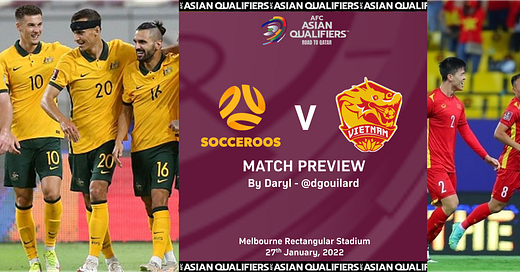



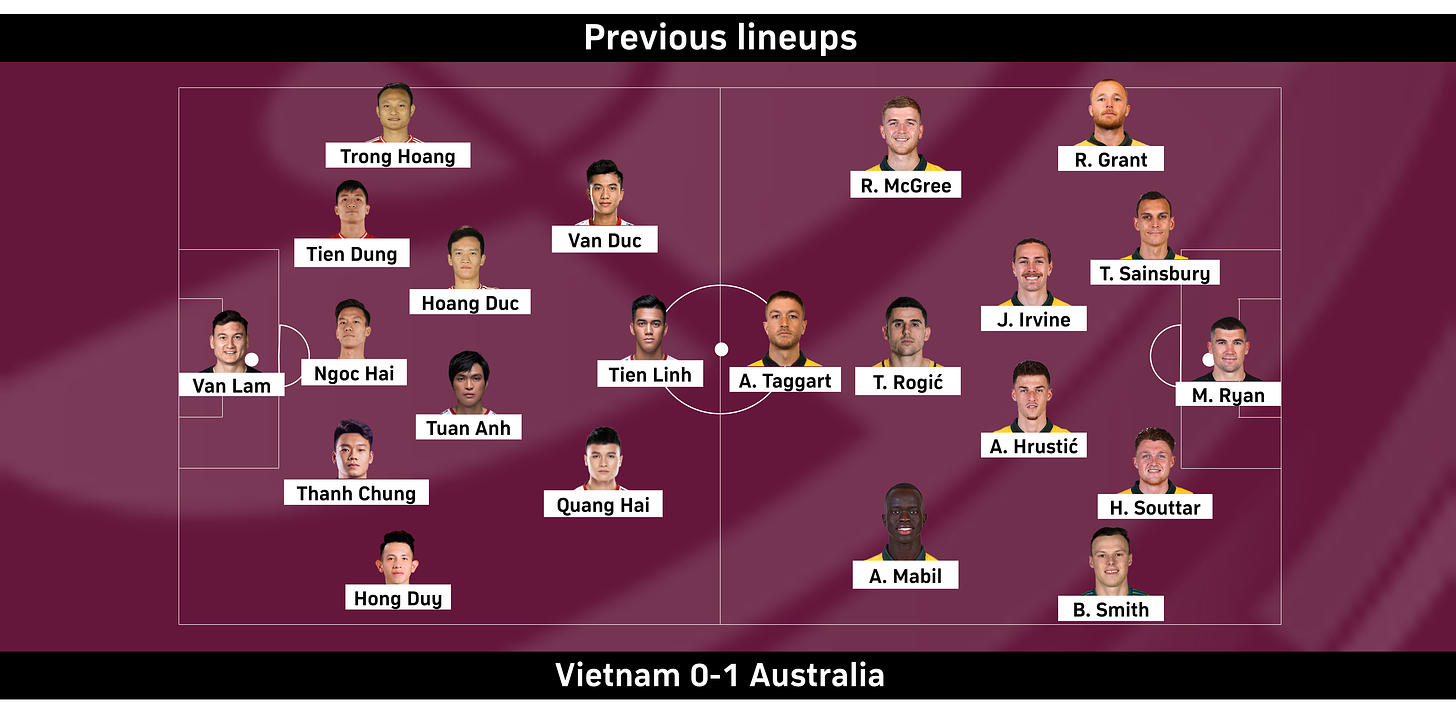
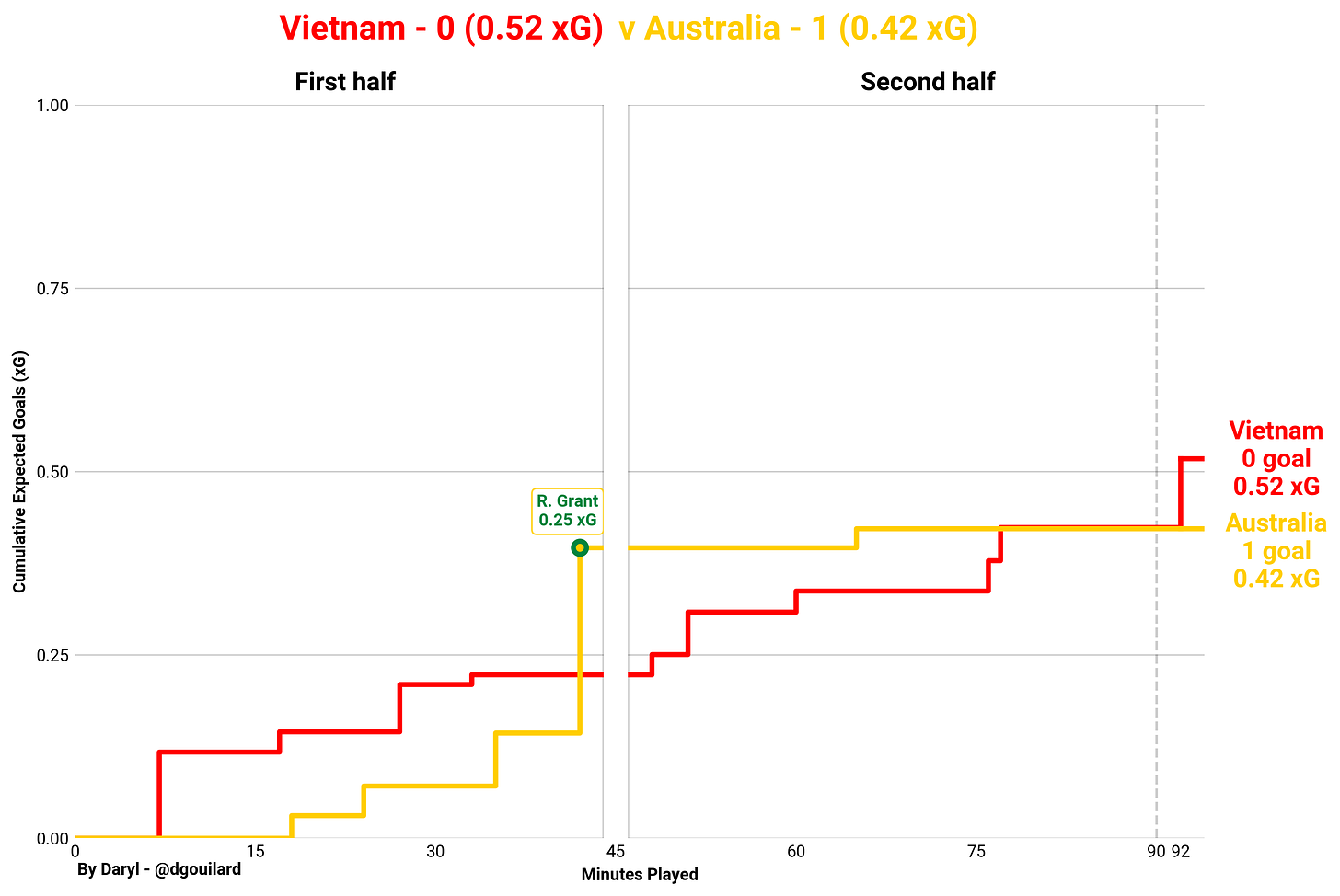
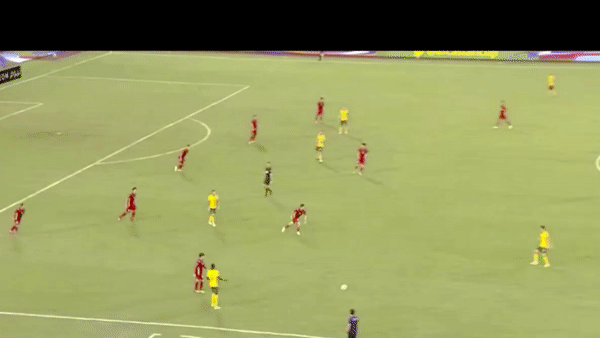
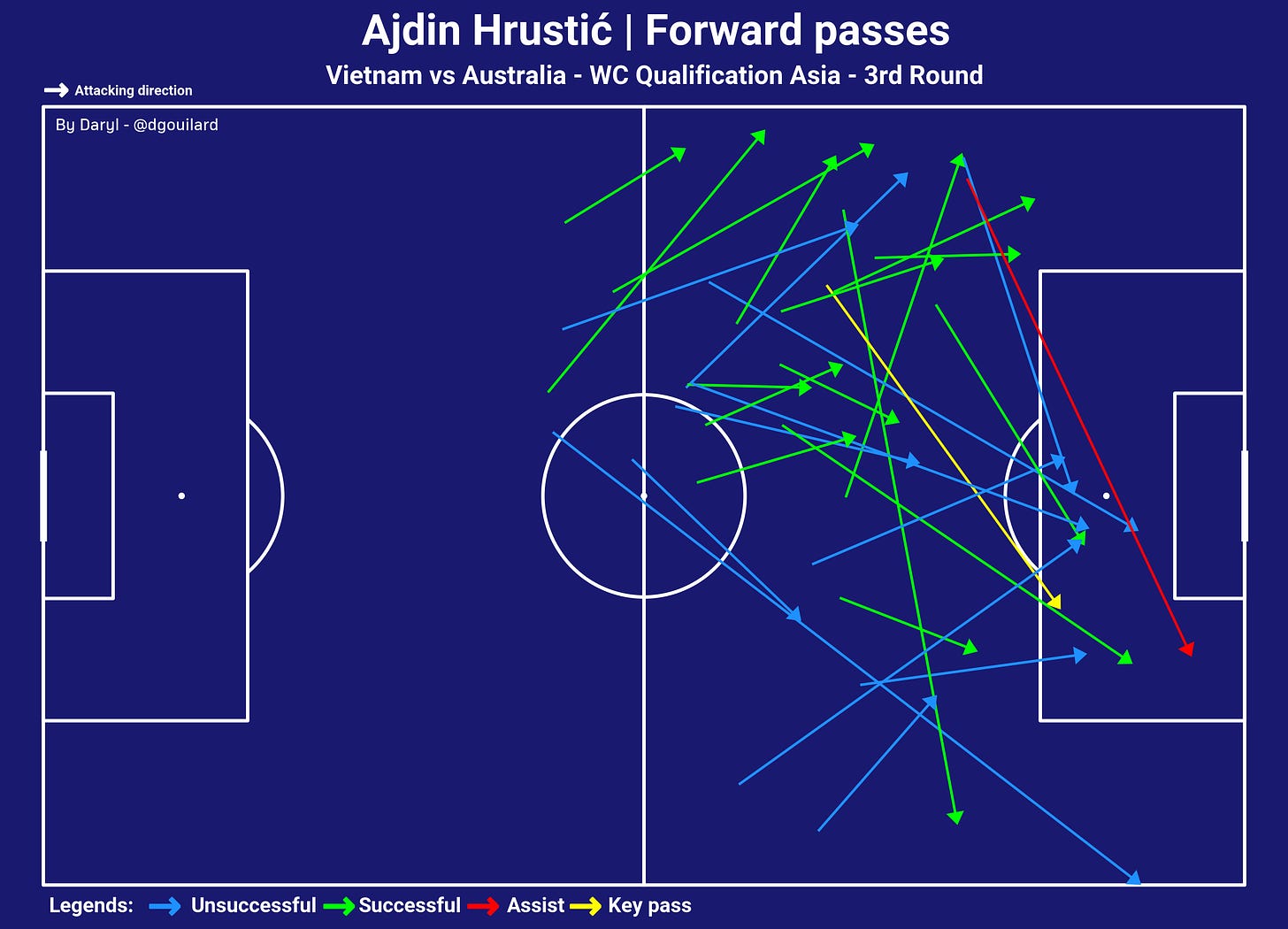

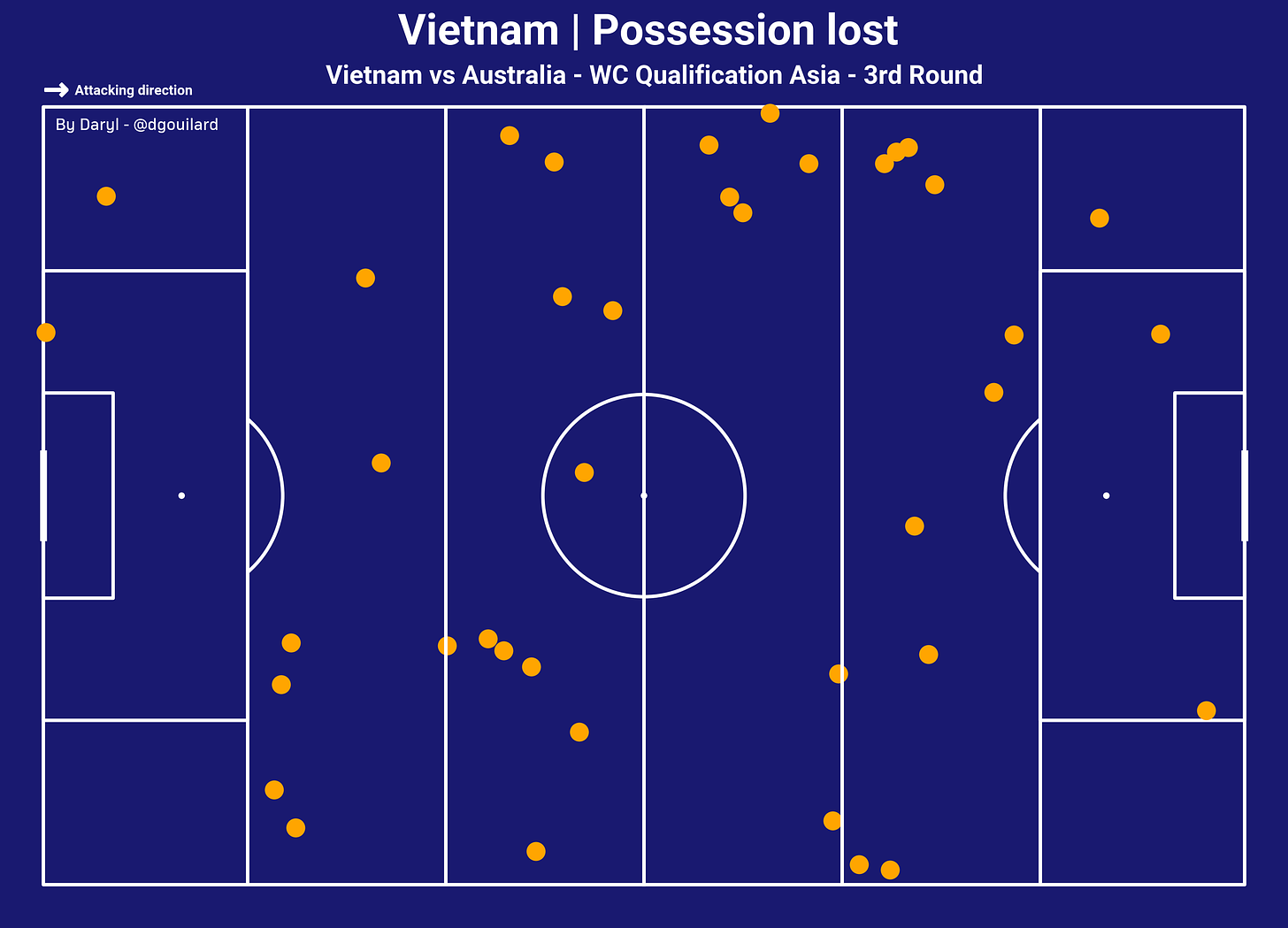

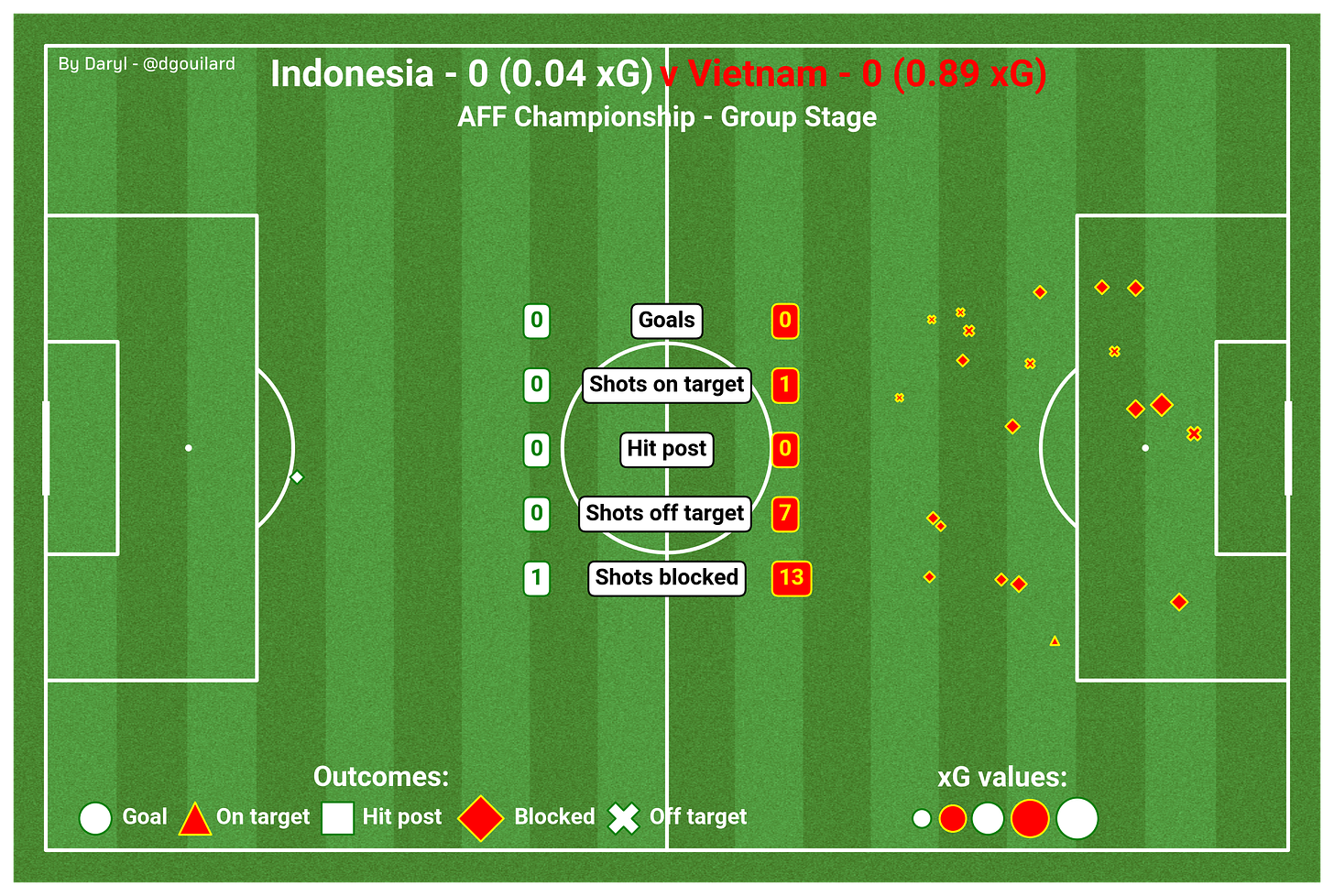

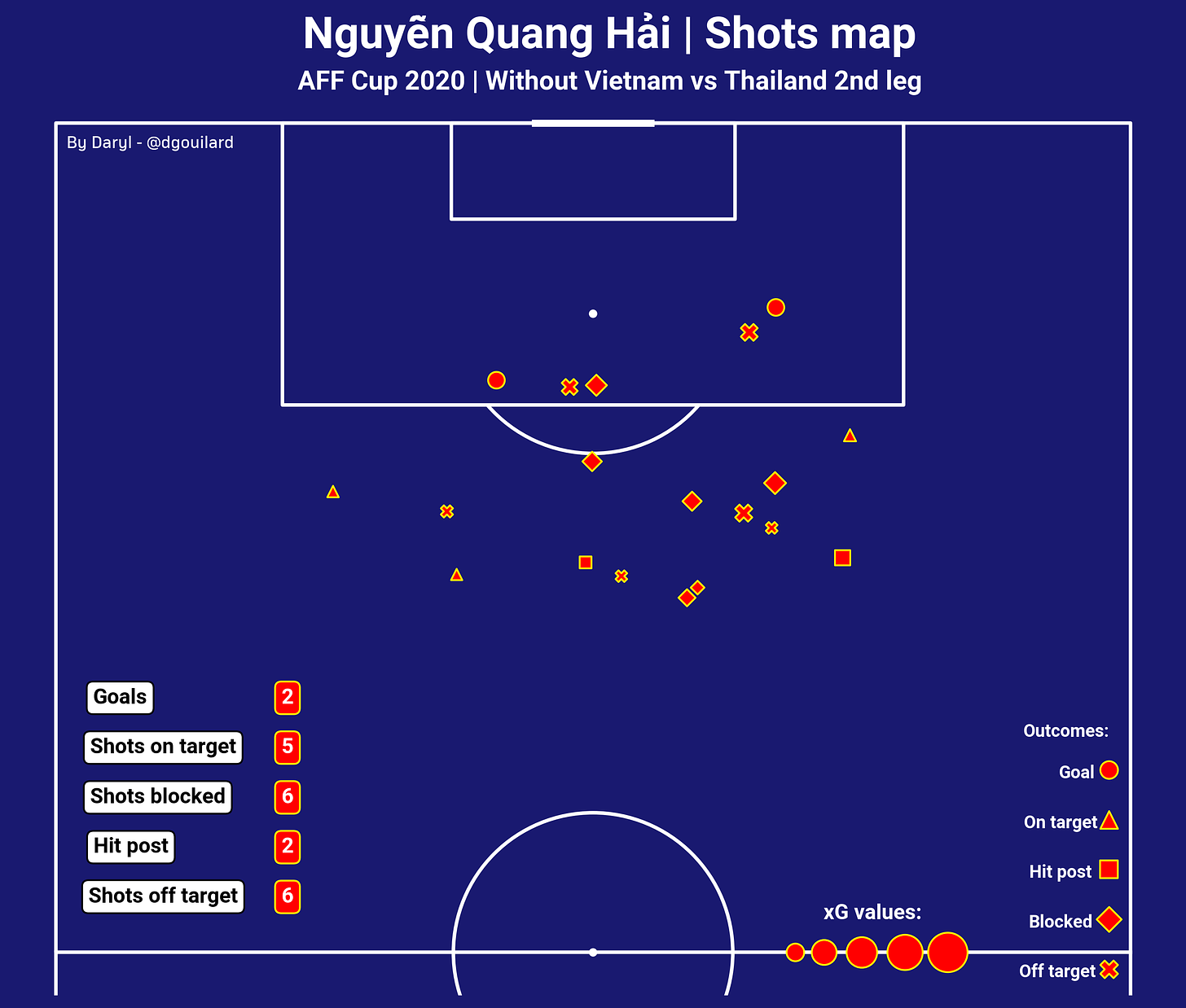
Really enjoyed that mate. Cheers. I've subscribed!